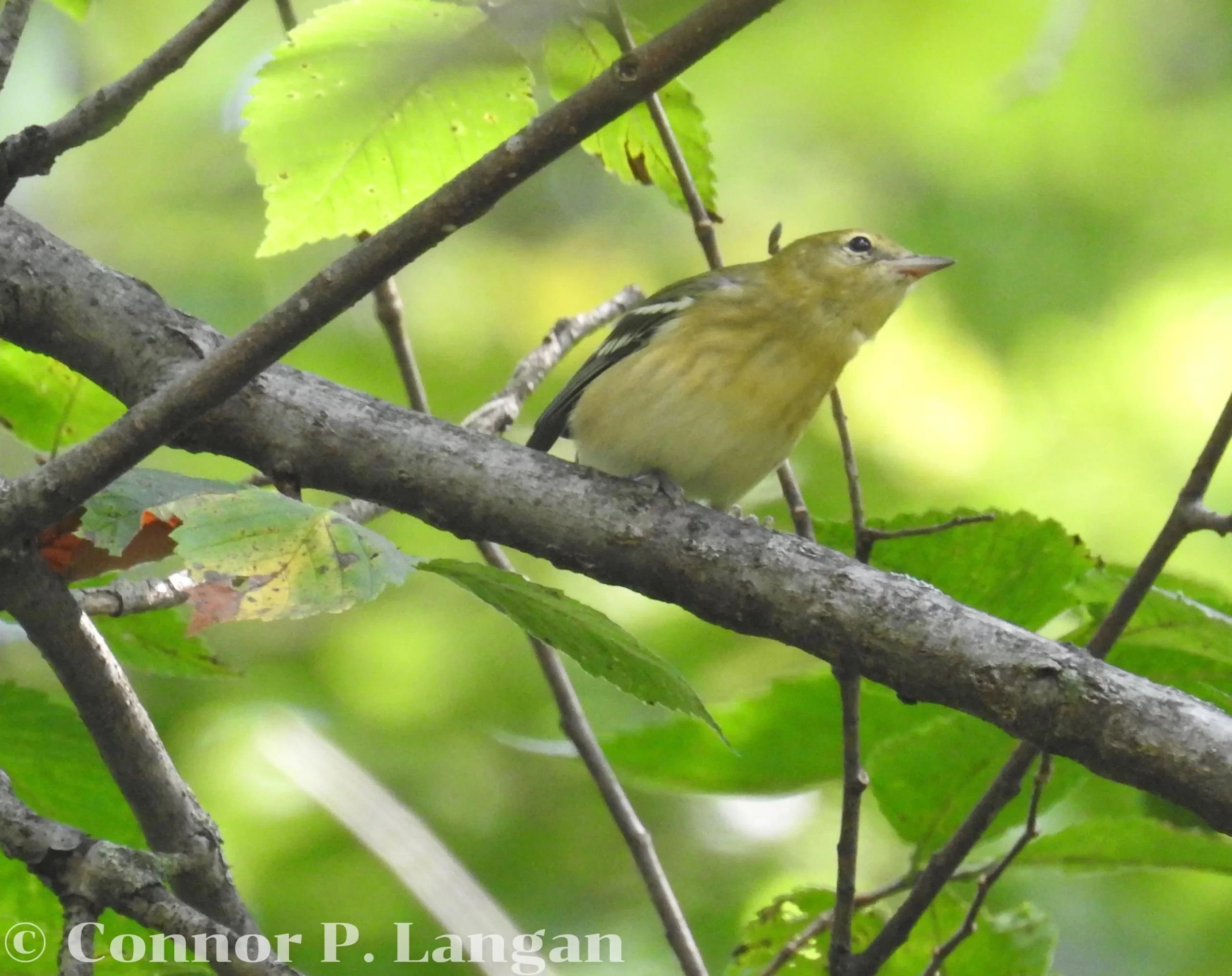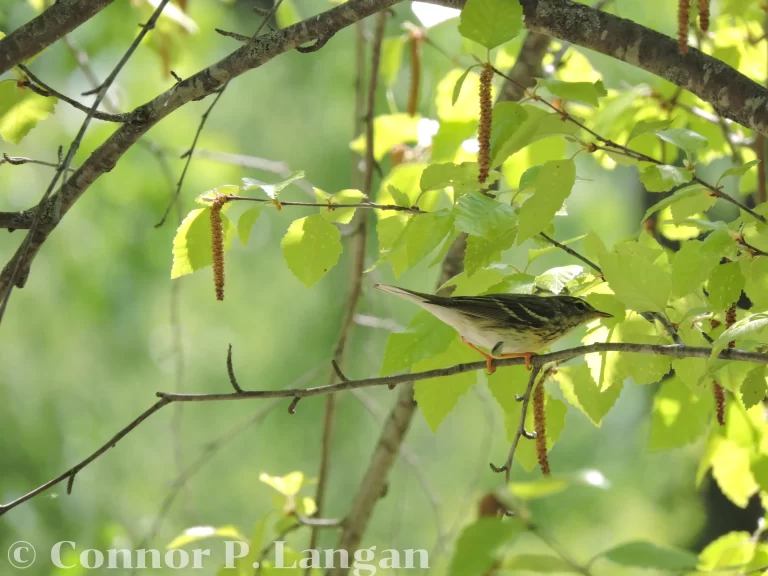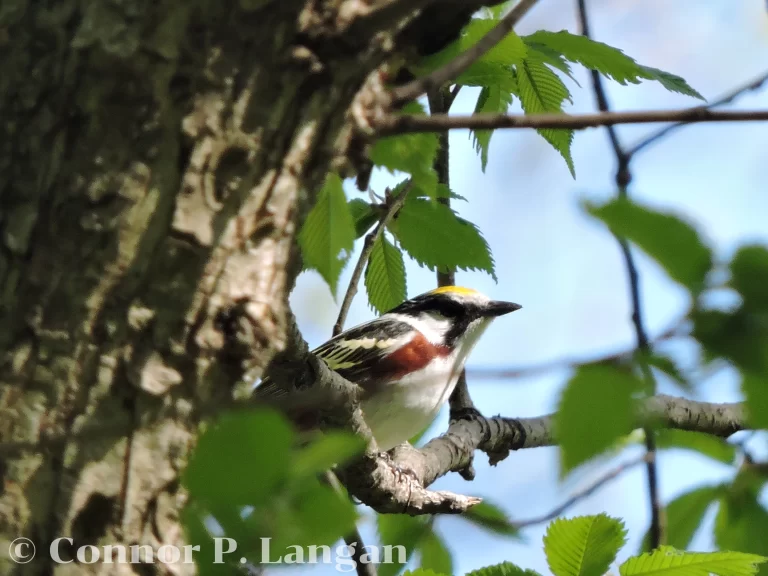Description
The Bay-breasted Warbler is a sizable warbler with an average-sized bill. These birds have long tails, but they appear short due to the long wings of this species.
Bay-breasted Warblers measure about 5.5 inches long, and they weigh as much as 0.6 ounces.
Males and females look quite different during the breeding season. However, males and females share many similarities during the nonbreeding season. This species has two bold, white wingbars on each wing no matter the time of year.
Breeding males have a rich red (also known as “bay”) coloration on their crowns, throats, and flanks. They also have cream-colored undersides and necks, black masks, and dark backs and wings.
Breeding females are drab overall with buff-colored undersides, buff-colored eyering, gray backs and wings, and subtle bay coloration on the cheeks and crown.
Nonbreeding males have dark wings, green backs, yellow neck patches, partial buff-colored eyerings and undersides, and bay-colored flanks.
Nonbreeding females and immatures have bright green backs and crowns, buff-colored undersides, and gray wings. They are plain and lack distinct markings other than their wingbars.
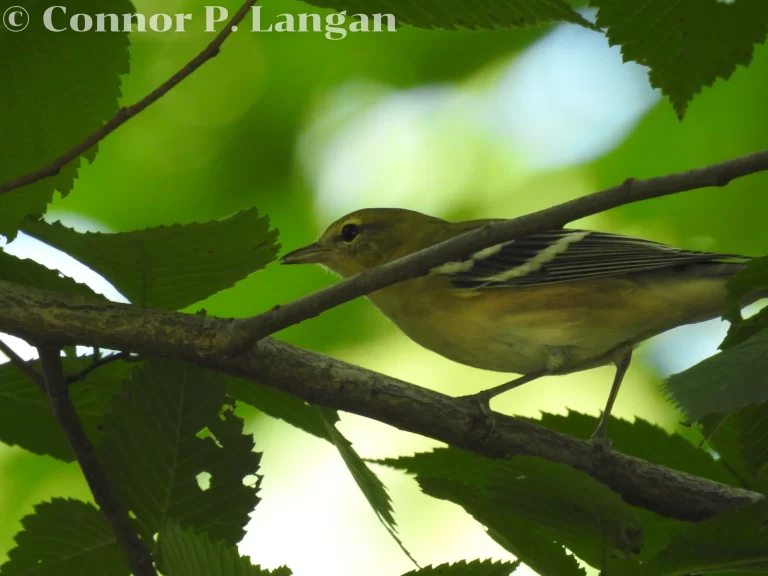
A male in nonbreeding plumage
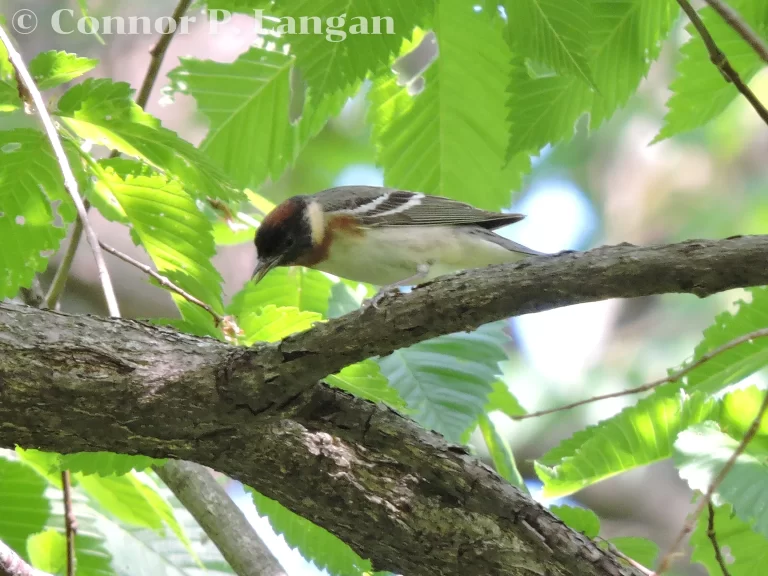
A male in breeding plumage
Bay-breasted Warbler Behavior
Bay-breasted Warblers are protective of their territories, with males chasing away intruders. This species uses its size to drive away smaller warblers that encroach on their turf.
Bay-breasted Warblers are largely solitary during the breeding season, but they join mixed species foraging groups during fall and winter. This species is more methodical in its foraging efforts than many other warblers.
Diet
Insects make up the bulk of a Bay-breasted Warbler’s diet, with spruce budworms being a key food sources during the breeding season. These birds incorporate a significant amount of fruits during the fall and winter.
Habitat
This species breeds almost exclusively in coniferous forests that feature trees such as firs and spruces. Bay-breasted Warblers try to establish breeding territories near water whenever possible.
Although this species has stringent breeding territory requirements, they are quite adaptable during migration and winter. Watch for these birds in any forested area during migration. Parks, forests, and other areas with trees will support wintering Bay-breasted Warblers.
Bay-breasted Warbler Range
Bay-breasted Warblers breed in the boreal forests of Canada, Minnesota, Michigan, and the Northeast. They winter in the Caribbean, Central America, and northern South America.
Breeding
Bay-breasted Warblers are likely monogamous by nature, but these birds typically find new mates every year.
Females handle the bulk of the nest construction, but males offer a small amount of assistance. Nests are situated along a branch in a coniferous tree. These structures are often within the lower confines of a tree.
The cup-shaped nests of Bay-breasted Warblers are made from bark, grasses, pine needles, twigs, and other plant fibers. Spider web silk is incorporated into the nests as well.
Females typically produce a single brood, with spruce budworm numbers dictating how many eggs she lays. As many as 7 eggs may be laid, and both male and female incubate the eggs. It likely takes just shy of two weeks for eggs to hatch, and both parents help to feed the young.
Backyard Birding
Watching the trees and shrubs in your yard during spring and fall migration is a backyard birder’s best chance of observing a Bay-breasted Warbler in their yard. These birds will not nest in birdhouses or eat from bird feeders.
Bay-breasted Warbler Population Status
It is difficult to determine estimates of Bay-breasted Warbler populations since this species favors remote breeding areas. However, it is believed that this species has experienced small population declines in the past half-century. There are around 10 million of these warblers today.
Deforestation and habitat fragmentation negatively impact this species, while the spraying of insecticides in their breeding habitat to mitigate spruce budworms also has a negative impact.

